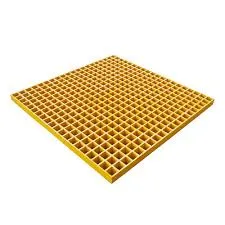
-
 Afrikaans
Afrikaans -
 Albanian
Albanian -
 Amharic
Amharic -
 Arabic
Arabic -
 Armenian
Armenian -
 Azerbaijani
Azerbaijani -
 Basque
Basque -
 Belarusian
Belarusian -
 Bengali
Bengali -
 Bosnian
Bosnian -
 Bulgarian
Bulgarian -
 Catalan
Catalan -
 Cebuano
Cebuano -
 China
China -
 China (Taiwan)
China (Taiwan) -
 Corsican
Corsican -
 Croatian
Croatian -
 Czech
Czech -
 Danish
Danish -
 Dutch
Dutch -
 English
English -
 Esperanto
Esperanto -
 Estonian
Estonian -
 Finnish
Finnish -
 French
French -
 Frisian
Frisian -
 Galician
Galician -
 Georgian
Georgian -
 German
German -
 Greek
Greek -
 Gujarati
Gujarati -
 Haitian Creole
Haitian Creole -
 hausa
hausa -
 hawaiian
hawaiian -
 Hebrew
Hebrew -
 Hindi
Hindi -
 Miao
Miao -
 Hungarian
Hungarian -
 Icelandic
Icelandic -
 igbo
igbo -
 Indonesian
Indonesian -
 irish
irish -
 Italian
Italian -
 Japanese
Japanese -
 Javanese
Javanese -
 Kannada
Kannada -
 kazakh
kazakh -
 Khmer
Khmer -
 Rwandese
Rwandese -
 Korean
Korean -
 Kurdish
Kurdish -
 Kyrgyz
Kyrgyz -
 Lao
Lao -
 Latin
Latin -
 Latvian
Latvian -
 Lithuanian
Lithuanian -
 Luxembourgish
Luxembourgish -
 Macedonian
Macedonian -
 Malgashi
Malgashi -
 Malay
Malay -
 Malayalam
Malayalam -
 Maltese
Maltese -
 Maori
Maori -
 Marathi
Marathi -
 Mongolian
Mongolian -
 Myanmar
Myanmar -
 Nepali
Nepali -
 Norwegian
Norwegian -
 Norwegian
Norwegian -
 Occitan
Occitan -
 Pashto
Pashto -
 Persian
Persian -
 Polish
Polish -
 Portuguese
Portuguese -
 Punjabi
Punjabi -
 Romanian
Romanian -
 Russian
Russian -
 Samoan
Samoan -
 Scottish Gaelic
Scottish Gaelic -
 Serbian
Serbian -
 Sesotho
Sesotho -
 Shona
Shona -
 Sindhi
Sindhi -
 Sinhala
Sinhala -
 Slovak
Slovak -
 Slovenian
Slovenian -
 Somali
Somali -
 Spanish
Spanish -
 Sundanese
Sundanese -
 Swahili
Swahili -
 Swedish
Swedish -
 Tagalog
Tagalog -
 Tajik
Tajik -
 Tamil
Tamil -
 Tatar
Tatar -
 Telugu
Telugu -
 Thai
Thai -
 Turkish
Turkish -
 Turkmen
Turkmen -
 Ukrainian
Ukrainian -
 Urdu
Urdu -
 Uighur
Uighur -
 Uzbek
Uzbek -
 Vietnamese
Vietnamese -
 Welsh
Welsh -
 Bantu
Bantu -
 Yiddish
Yiddish -
 Yoruba
Yoruba -
 Zulu
Zulu
Benefits and Applications of Fiberglass Grating in Industrial Settings
The Advantages of Fiberglass Grating A Comprehensive Overview
Fiberglass grating is an engineered product that combines the strength of glass fibers with the durability of resin, resulting in a highly versatile material that has found extensive use in various industrial and commercial applications. With its unique properties, fiberglass grating offers numerous advantages over traditional materials such as metal and wood, making it an ideal choice for a wide range of environments and uses.
One of the most significant advantages of fiberglass grating is its corrosion resistance. Unlike metal grating, which can rust and degrade over time when exposed to harsh chemicals and moisture, fiberglass grating is resistant to most corrosive substances, including acids, alkalis, and solvents. This property makes it particularly suitable for environments such as chemical plants, wastewater treatment facilities, and marine applications, where corrosive elements are prevalent. By using fiberglass grating, facilities can extend the lifespan of their infrastructure and reduce maintenance costs associated with replacement and repairs.
Lightweight and easy to install, fiberglass grating offers significant logistical advantages as well. Weighing considerably less than steel or aluminum grating, fiberglass grating is easier to handle and transport, which can lead to reduced labor costs during installation. Additionally, its non-conductive nature makes it a safe choice in electrical applications, preventing accidental electrocution while ensuring a reliable footing for workers.
Another critical advantage of fiberglass grating is its excellent slip resistance. The surface of fiberglass grating can be tailored with different textures and finishes, providing a high level of traction even in wet or oily conditions. This feature is particularly beneficial in workplaces where safety is a priority, such as factories, outdoor walkways, and oil rigs. With the added safety of slip-resistant surfaces, employers can create a safer work environment and reduce the risk of accidents and injuries.
fiberglass grating

Fiberglass grating is also highly customizable, available in various sizes, thicknesses, and load-bearing capacities. This flexibility allows engineers and designers to choose the appropriate grating type for specific applications, whether it's a heavy-duty walkway or a light-duty platform. Furthermore, fiberglass grating can be produced in different colors and styles, offering the aesthetic appeal necessary for architectural applications while maintaining functionality.
Beyond its practical applications, fiberglass grating is also environmentally friendly. The manufacturing process for fiberglass grating generally produces fewer harmful emissions compared to metal grating. Additionally, fiberglass is often made from recycled materials, contributing to sustainability efforts in various industries. By choosing fiberglass grating, organizations can demonstrate their commitment to environmental responsibility.
Finally, the cost-effectiveness of fiberglass grating cannot be overlooked. While its initial investment may be higher than traditional materials, the long-term savings associated with reduced maintenance costs, extended lifespan, and safety enhancements make it a smart choice for businesses. Companies that prioritize durability and sustainability find that the benefits of fiberglass grating outweigh its upfront costs.
In conclusion, fiberglass grating is an innovative solution that offers numerous advantages for industrial and commercial applications. With its unparalleled corrosion resistance, lightweight nature, slip-resistant surface, customizable options, and environmental benefits, it is no wonder that fiberglass grating is becoming the material of choice for many sectors. As industries continue to evolve and demand safer, more durable materials, fiberglass grating will undoubtedly play a pivotal role in shaping the future of construction and infrastructure. Its combination of practicality and performance positions it as a leading option in the modern marketplace, ideal for any project requiring strength, safety, and sustainability.









